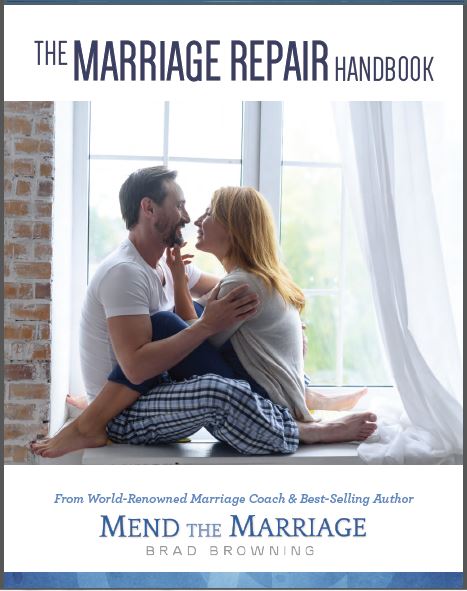Old Fashioned Marriage Discipline. The very phrase evokes a range of emotions. Some might picture rigid roles and stern pronouncements, a world far removed from our modern understanding of relationships. Others might see a foundation of stability and commitment, a structure that fostered strong, enduring unions. The reality, as with most historical social constructs, is far more nuanced. We will explore the complexities of “old-fashioned” marriage discipline, examining its impact on relationships, both positive and negative, and how its echoes resonate—or don’t—in contemporary partnerships. Understanding the past helps us better navigate the present, allowing us to learn from both successes and failures in the pursuit of strong, healthy relationships. It’s about finding balance, respecting the wisdom of the past while embracing the evolution of our understanding of love and commitment.
Where Did Old Fashioned Originate?
The concept of “old-fashioned” is inherently subjective, a moving target defined by the present. What was considered traditional in the 1800s might appear antiquated today. The origins of many “old-fashioned” marriage dynamics lie in the specific cultural, religious, and societal norms prevalent at the time. These weren’t monolithic; practices varied wildly depending on factors like geographic location, socioeconomic status, and religious affiliation. Rural communities often maintained practices and beliefs different from those in burgeoning urban centers. The Industrial Revolution, for instance, significantly altered traditional family structures and gender roles, creating new dynamics and challenges for marital relationships. Furthermore, religious beliefs played a significant role in shaping expectations around marriage and family. Different faiths had vastly different approaches, impacting everything from the role of women to the enforcement of rules.
What Was Marriage Like in the 1800s?
Marriage in the 1800s often centered on practicality and economic necessity. It was less a romantic partnership and more a social and economic arrangement. Women frequently took on a primarily domestic role, managing the household and raising children. Men, typically, were the sole breadwinners, responsible for providing financial security. However, this doesn’t paint a complete picture. While these gender roles were prevalent, many historical accounts detail loving and supportive partnerships, challenging the stereotype of universally unhappy marriages. Romantic love, while perhaps not the sole foundation of the union, certainly played a role in many cases. Furthermore, the available historical records often reflect the experiences of the wealthy, leaving the experiences of the working class largely undocumented.
Is Marriage Old Fashioned?
The question of whether marriage is “old-fashioned” is complex. While the institution of marriage persists, the way we approach it has drastically changed. The idea of lifelong commitment is still valued by many, yet the definition of that commitment has expanded to include shared responsibilities and fluid roles. Many modern couples prioritize egalitarianism, sharing household tasks and childcare responsibilities. The traditional notion of the male breadwinner and female homemaker is increasingly obsolete. Yet the core value of partnership and commitment remains, albeit within a more flexible and evolving framework.
Is Marriage Outdated?
The notion that marriage is outdated is a statement reflecting changing societal values and individual preferences. While many still view marriage as a meaningful and worthwhile institution, offering stability and support, others find alternative relationship structures more fulfilling. The rise of cohabitation, civil unions, and other non-traditional partnership models exemplifies this shift. Furthermore, individual choices regarding marriage are influenced by various factors such as personal beliefs, cultural background, and life experiences. Ultimately, whether marriage is considered outdated is a subjective assessment that varies significantly from person to person.
Age of Marriage Throughout History
Throughout history, the age at which people married varied widely, reflecting socio-economic factors and cultural norms. In some societies, marriages were often arranged at incredibly young ages, reflecting patriarchal systems and the economic advantages of early unions. In other cultures and time periods, individuals married considerably later in life, sometimes waiting until they had established financial independence or achieved certain social milestones. These variations highlight the significance of historical context in understanding marriage customs. The changing economic realities, the evolving roles of women, and evolving societal values have all played significant roles in shaping marriage practices over time.
Age in Marriage: Does It Matter?
The age at which a couple marries can influence the trajectory of their relationship, though it’s not a definitive predictor of success or failure. Younger couples may face unique challenges related to financial instability, career development, and emotional maturity. Older couples may have established careers and clearer life goals. However, the critical factors are not solely based on age; they are maturity, shared values, and a strong foundation of mutual respect. A successful marriage necessitates consistent communication, compromise, and the willingness to navigate life’s inevitable ups and downs as a team. The age gap, while relevant, is far less significant than the compatibility and commitment of the individuals.
Marriage Discipline
Old Fashioned Marriage Discipline. The term “marriage discipline” demands careful consideration. It shouldn’t be interpreted as control or subjugation. Instead, it can refer to the establishment of mutual accountability and shared expectations within a partnership. Setting clear boundaries and openly communicating expectations are vital for building a healthy and functional relationship. This involves establishing shared values, creating a framework for effective conflict resolution, and maintaining mutual respect throughout disagreements. It’s about collaborative goal-setting, not about one individual dominating the other.
Traditional Marriage Discipline
Traditional approaches to marriage often emphasized distinct gender roles and a hierarchical structure. While some viewed this as a source of stability and order, others found it restrictive and limiting. Many traditional models of “discipline” involved methods that are today considered unacceptable, focusing on control rather than collaboration and often leading to resentment and unhappiness. Modern perspectives emphasize equality, mutual respect, and open communication as crucial components of a healthy marriage. This shift reflects a changing understanding of healthy relationships, placing emphasis on collaboration and mutual growth.
Old Fashioned Discipline Methods
Old Fashioned Marriage Discipline. Some “old-fashioned” methods of discipline involved harsh punishments and inflexible rules, often rooted in fear and control. These methods, now widely condemned, are antithetical to a healthy and equitable relationship. Modern approaches prioritize respect, empathy, and understanding. Rather than focusing on punishment, the emphasis is on positive reinforcement, open communication, and collaborative problem-solving. This creates an environment of mutual growth and trust, promoting healthy conflict resolution.
Traditional Discipline vs. Modern Discipline
The contrast between traditional and modern approaches to discipline within marriage is stark. Traditional methods frequently relied on rigid rules and punishments, often enforcing specific gender roles and expectations. Modern approaches, in contrast, prioritize open communication, mutual respect, and collaborative problem-solving. This focus on understanding, empathy, and compromise promotes a relationship built on equality and shared decision-making. The shift highlights a greater emphasis on psychological well-being and a rejection of controlling behavior in favor of creating an environment conducive to individual and relational growth.
What is Traditional Discipline?
Old Fashioned Marriage Discipline. Traditional discipline in the context of marriage frequently involved a rigid adherence to pre-defined roles and expectations, often with harsh consequences for any perceived deviation. These methods frequently lacked empathy and communication, often relying on the threat of punishment to maintain order. Power dynamics were typically imbalanced, with one partner often holding significantly more authority than the other. Such approaches are widely criticized today for their potential to breed resentment, suppress individual needs, and ultimately undermine the very foundation of a healthy, happy relationship.
Old Fashioned Child Discipline
Old-fashioned child discipline methods varied considerably, but many were characterized by physical punishment or strict adherence to a rigid set of rules. Modern parenting approaches prioritize positive reinforcement, open communication, and understanding the underlying reasons for a child’s behavior. The focus has shifted towards nurturing healthy emotional and social development through consistent guidance, rather than controlling behavior through fear or physical coercion.
Discipline in Marriage
Old Fashioned Marriage Discipline. Discipline, in a modern context of marriage, is not about punishment or control, but about establishing healthy boundaries, expectations, and accountability within the relationship. It involves clear communication, mutual respect, and a willingness to address conflicts constructively. Effective conflict resolution, the ability to compromise, and a shared commitment to maintaining a healthy partnership are key elements. The goal is not to control the other partner, but to work collaboratively to achieve mutual growth and create a strong, loving bond.
Should a Husband Discipline His Wife?
Absolutely not. Any form of coercive control or dominance within a marriage is completely unacceptable. Marriage is a partnership founded on mutual respect, equality, and shared decision-making. One partner should never exert control or authority over the other. Healthy relationships thrive on open communication, compromise, and a shared commitment to the well-being of both individuals.
Old Fashioned Marriage Advice
Old-fashioned marriage advice often emphasized duty, sacrifice, and adherence to strict gender roles. While commitment is indeed essential for a successful marriage, modern advice emphasizes the importance of open communication, mutual respect, compromise, and continuous personal growth within the relationship. This reflects a broader societal understanding of healthy relationships and a rejection of traditional gender roles.
Marriage Tips from Old Couples
Many older couples emphasize the importance of communication, patience, and shared experiences in sustaining a long-lasting marriage. They often highlight the value of mutual support, understanding, and adapting to life’s changes as a team. Adaptability to shifting priorities and life circumstances is key to navigating the long-term challenges and rewards of a committed partnership.
Old School Marriage Counseling
Older methods of marriage counseling might have lacked the nuance and understanding of modern approaches. Contemporary counseling often incorporates a deeper understanding of communication styles, conflict resolution techniques, and individual emotional needs. This shift reflects evolving knowledge in psychology and a more holistic approach to resolving relationship issues.
Old Fashioned Marriage Vows
Traditional marriage vows often emphasized obedience and submission, reflecting traditional gender roles and power dynamics. Modern vows frequently emphasize equality, partnership, and mutual commitment, reflecting the evolving understanding of healthy relationships and shared responsibility.
Weird Wedding Traditions from the Olden Days
Many older wedding traditions, while sometimes appearing peculiar from a modern perspective, offer glimpses into the cultural norms and beliefs of the past. These traditions reflect diverse cultural expressions and historical contexts.
How to Handle a Separation of Marriage
Navigating a marital separation is a challenging process that often requires professional guidance. Open communication, while difficult, is essential. Seeking counseling or mediation can provide support and structure during this difficult time. Prioritizing the well-being of all involved parties is paramount.









